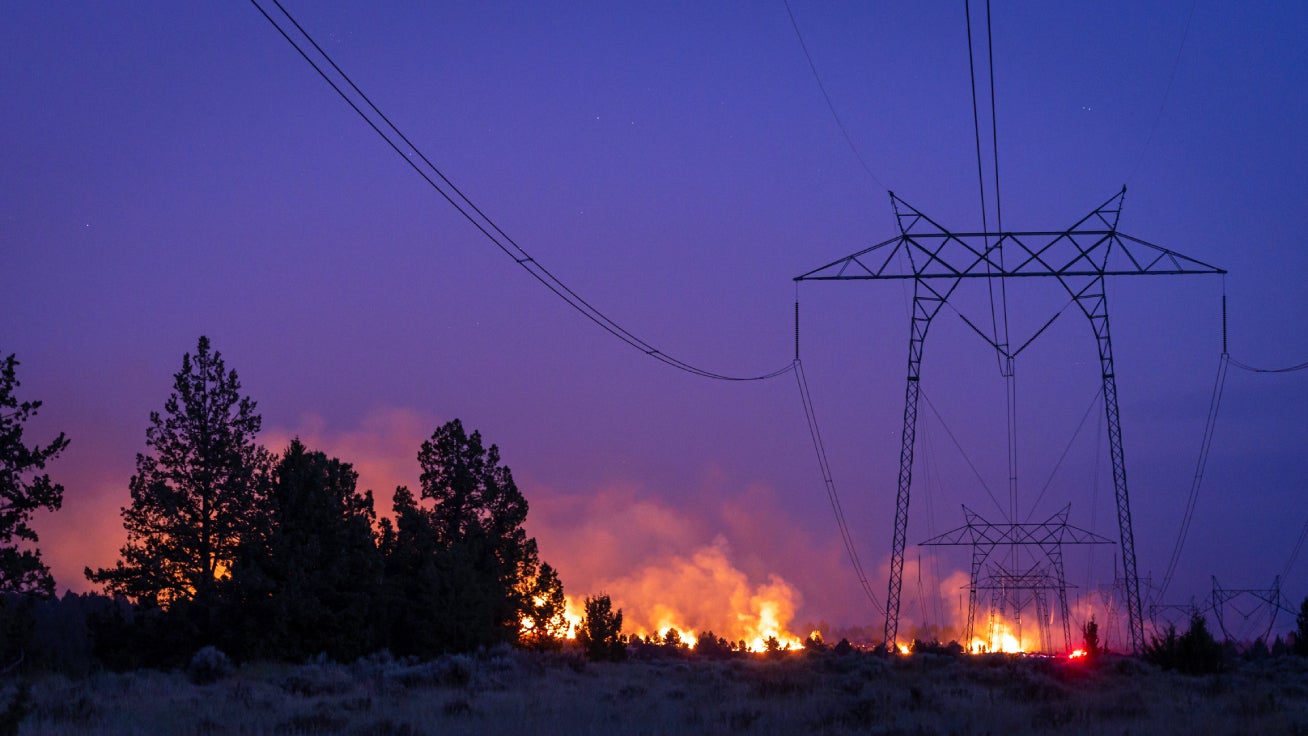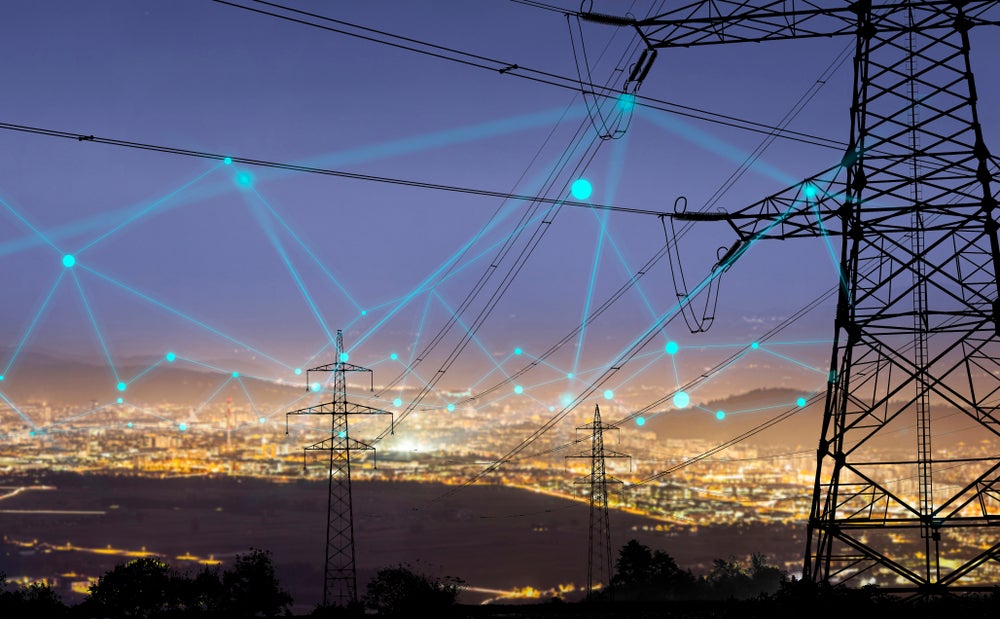
Digital twins are everywhere. Across sectors such as healthcare, automotive and oil, virtual models can be found which reduce operating costs and extend equipment life through troubleshooting and predictive maintenance, as made possible by the models’ forecasts. If modelled well, digital twins can be powerful tech – something which the power industry has also realised.
The risk forecasting power of digital twins has been put to use against a rising problem in an increasingly warm world: wildfires. Not everyone knows that powerlines are a leading cause of wildfire. One power company in the US, PG&E, caused more than 1,500 fires across California in under four years before declaring bankruptcy due to liability.
There are various reasons why powerlines are so incendiary, but digital twins have helped solve one of them: vegetation. For its power distribution network in Tasmania, Australia, TasNetworks tapped geo-data specialist Fugro to create a digital twin. Vegetation that comes into contact with powerlines can ignite fires, so the company needed a solution for managing and mitigating bush fire risk around the network.
Tasmanian digital
As GlobalData’s analysts note in their recent thematic report on digital twins: “there is no single template, solution, or indeed platform that will magically create digital twins. Building one does not require the use of any specific technology.”
The Fugro digital twin solution ROAMES is, as Fugro’s director of analytics and cloud automation services Terry McConnell explains, a precise 3D network model generated from remote sensing data.
“Most digital asset models are abstract or exist with no surrounding contextual information, but the ROAMES digital twin is positioned within the local environment in which vegetation, structures, and other features are also modelled,” says McConnell.
How well do you really know your competitors?
Access the most comprehensive Company Profiles on the market, powered by GlobalData. Save hours of research. Gain competitive edge.

Thank you!
Your download email will arrive shortly
Not ready to buy yet? Download a free sample
We are confident about the unique quality of our Company Profiles. However, we want you to make the most beneficial decision for your business, so we offer a free sample that you can download by submitting the below form
By GlobalData“This in situ approach offers a true representation of reality, allowing asset managers to assess and manage risk more effectively.”
The ROAMES twin’s data comes from aerial lidar and imagery data, processed using machine-learning and cloud-computing systems.
It also offers image-based condition assessment of the pole tops in selected high-outage areas, such as those exposed to extreme winds and salt spray. High-resolution imagery of the poles is captured from helicopter-mounted cameras and combined with automated data analytics to spot defects, prompting immediate action and informing longer-term asset maintenance and replacement plans.
McConnell is confident in the product, telling Verdict that Fugro’s digital twin solution has been shown to save up to 40% of a typical electrical power distribution company’s vegetation management budget.
“This is done by defining those areas along the distribution lines that are operating as expected and therefore don’t need a ground inspection,” McConnell explains. “Year-on-year comparative surveys of vegetation growth can also yield trends that allow for future yearly predictions and the extent of the vegetation management requirement.”
Terry McConnell, Fugro’s director of analytics and cloud automation services.
Digital power worldwide
The TasNetworks investment will help the company avoid the same fate which befell PG&E. But digital twins are being used by the power industry in ways that go beyond wildfires. While the actual number of dedicated deals centred on digital twins remains small for now, GlobalData’s research notes various big budget twin projects in power and renewable energy.
The US Department of Energy (DoE) for one is using the tech to support the development of floating offshore wind turbines with a $3.6m grant for the creation of the world’s first digital twin software tailored to modelling such platforms.
This digital twin model will be a real-time representation of the WindFloat Atlantic (WFA) project planned for the waters off northern Portugal, which is expected to be one of the world’s first floating offshore wind farms. Insights from the model will give designers, operators and other stakeholders a greater understanding of WFA’s performance and operation, leading to less downtime, lower operational costs and better predictive capabilities. The project is being led by a consortium including Akselos, whose algorithm-heavy software has also been used to extend the life of legacy oil and gas assets – as recently covered by Verdict.
The University of Michigan has also invested $5.2m to develop AI-enhanced digital twins of nuclear reactors, while Argonne National Laboratory is using digital twins to design the next generation of nuclear power plants for $8m.
For undisclosed amounts, private players such as Acciona, Exelon Generation and Aboitiz Power are using digital twins across water plant management, nuclear reactors and power grids, spanning the Middle East, US and South East Asia respectively.
For McConnell, investing in a digital twin makes sense for the power industry.
“Power utility business units, contractors, and key stakeholders can build a collaborative approach to asset management while moving toward a more resilient, sustainable community,” he explains. “In the short term, utilities will continue to migrate from field-based inspection to remote, desktop methods driven by advances in remote sensing and the proliferation of digital twins.”
Smart grids get smarter
The use of digital twins is also rising alongside the increased digitisation of power grids, especially with rising investment in smart grid software. According to a GlobalData report on smart grids, last year saw power utilities broaden their use of software tools to assess and control smart grids, particularly via digital twins.
The UK’s National Grid, the report notes, teamed up with Utilidata and Sense to setup a power grid twin to map power flow, voltage as well as infrastructure from the substation to the home.
PA Consulting, together with San Diego Gas & Electric, developed a world-first artificial intelligence (AI) system to avert power outages by alerting utilities of any asset failures ahead of the real-world event. American Electric Power (AEP) has also made an announcement of digital twinning of its transmission infrastructure, developed in partnership with Siemens, which is also working with Acciona on water plant twins.
Digital power, green energy
The smart grid space also aligns with that of smart cities, another area where digital twins can be used for energy purposes. One report, for example, claims that 15 “smart” provinces, cities and regions in China were able to enjoy economic benefits of more than 200 million yuan by using digital twins of smart grids.
15 “smart” provinces, cities and regions in China were able to enjoy economic benefits of more than 200 million yuan by using digital twins of smart grids.
Singapore’s “Virtual Singapore” twin gives another interesting use of digital twins in helping urban planners to analyse solar energy production potential. This is done with data on building height, rooftop surface and sunlight amount, identifying which buildings have better suitability for solar energy production and the fitting of solar panels. The model can show how much solar power can be generated on a typical day, as well as energy and cost savings.
In Europe a digital twin of the Paris Region, covering all 2.5 million buildings, networks and facilities of the Île-de-France territory, is used for similar purposes. Helsinki’s digital twin meanwhile combines its solar analytics with an atlas of energy and climate data covering heating systems, conducted renovations, energy certification and other building-specific information. In addition, this Energy and Climate Atlas – as it’s called – includes information on the consumption of electricity, district heating and water in rental buildings.
Digital twins can energise the energy transition, transforming more than cities and grids.
“The green potential of digital twins for energy lies in their ability to reduce energy consumption, in which the possibilities are manifold,” says Faustino Gomez, CEO and co-founder of Swiss machine learning brand NNAISENSE. “An example of this is a data center in which a digital twin can allow the cooling system to optimise based on overall plant sensor data and forecast based on weather data and computing demand data.
“Another example is manufacturing plant energy optimization, in which a digital twin on the shop floor can take data and knowledge from the physical machines, simulators, and equipment energy consumption management systems and add data and knowledge from domain experts and IT systems.
“A digital twin on the shop floor will then be able to provide more accurate energy consumption monitoring, improved behavioral and statistical analysis, and allow an overall reduction in energy consumption by optimising the scheduling of plant production as well as the coordination of machine tool upgrades.”
Faustino Gomez, CEO and co-founder of NNAISENSE.
No digital power network is an island
These are all examples of digital twins being used in power today. As for the tech’s future, McConnell believes that once a utility has captured its first digital twin, subsequent captures can “unlock additional information allowing them to monitor trends in asset movement or environmental encroachment.
“These insights provide the opportunity to migrate from cycle-based asset management to condition-based asset management whereby predictive analytics drive decision-making instead of arbitrary cycle maps,” the Fugro director explains to Verdict.
“The data and insights collected while doing surveys and analysis of the distribution networks of one client can, and should be, combined with those of related industrial sectors to provide a holistic digital city or ecosystem that has multiple stakeholders.
“The assets of an electrical power distribution company do not live in isolation from the industrial and urban ecosystems in which they are embedded.”
This could mean, among other things, less powerline-associated wildfires. In a broader sense, though, digital twins can help the power business resolve operational fires before they even have a chance to ignite.
Find GlobalData’s Thematic Research Digital Twins report here.






Related Company Profiles
Siemens AG
National Grid Plc
Acciona SA
Aboitiz Power Corp
Fugro NV